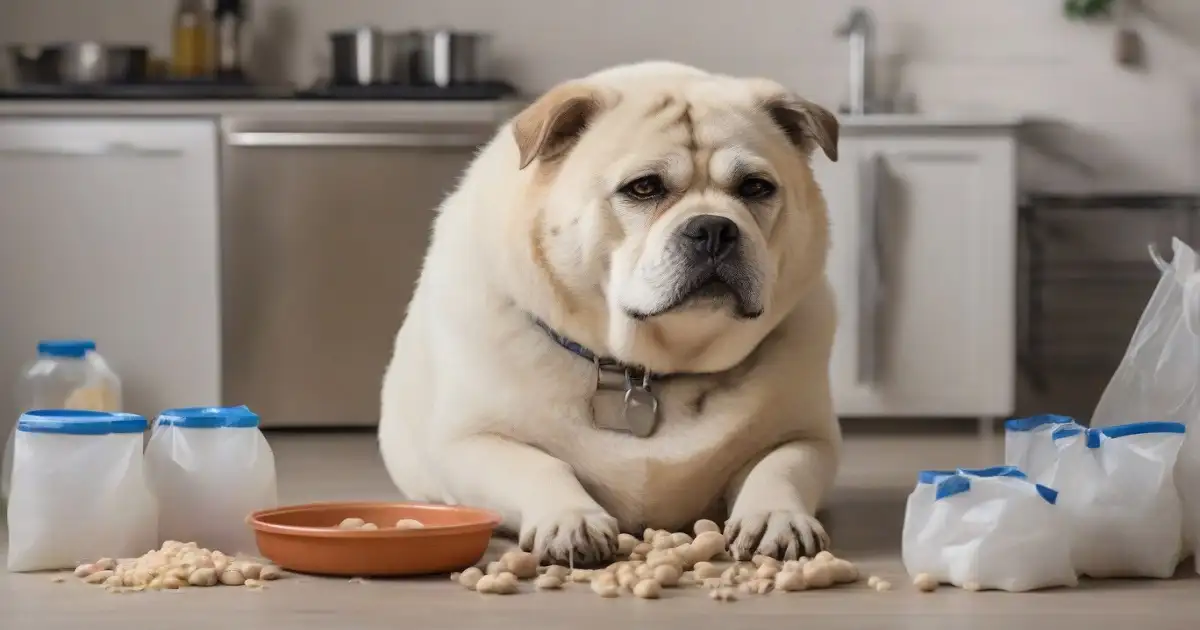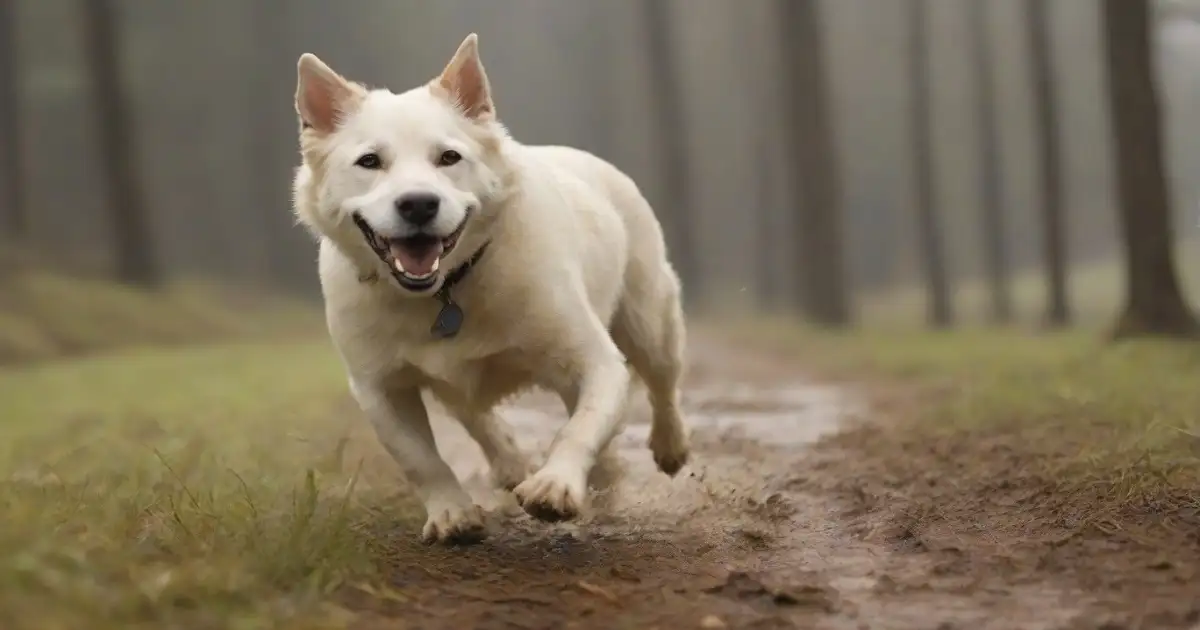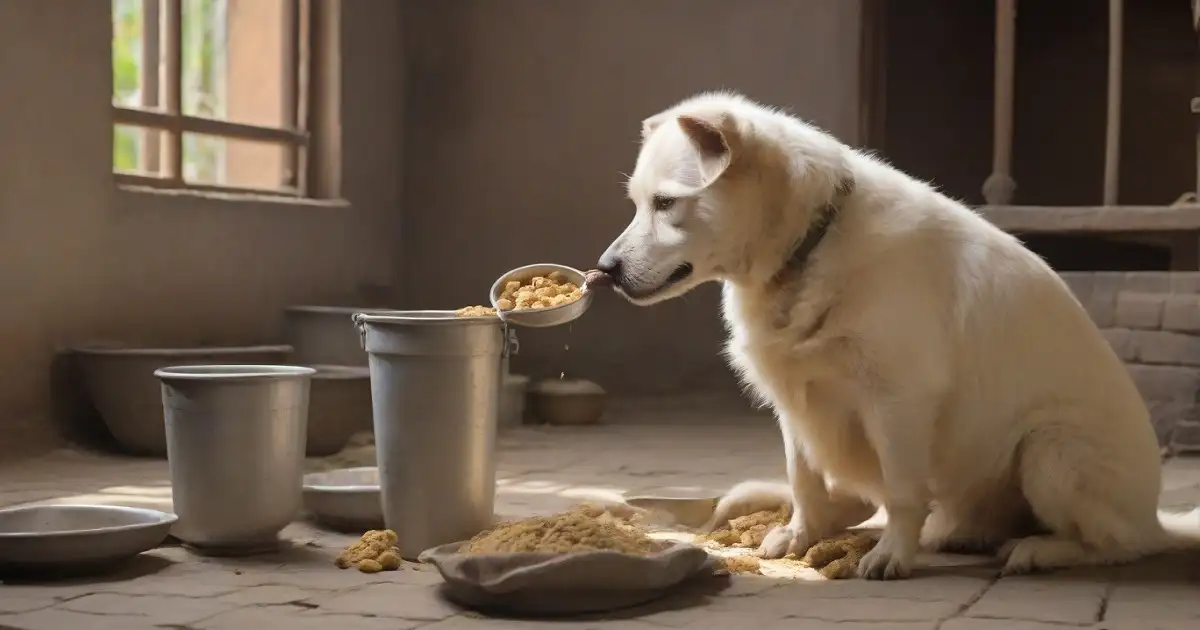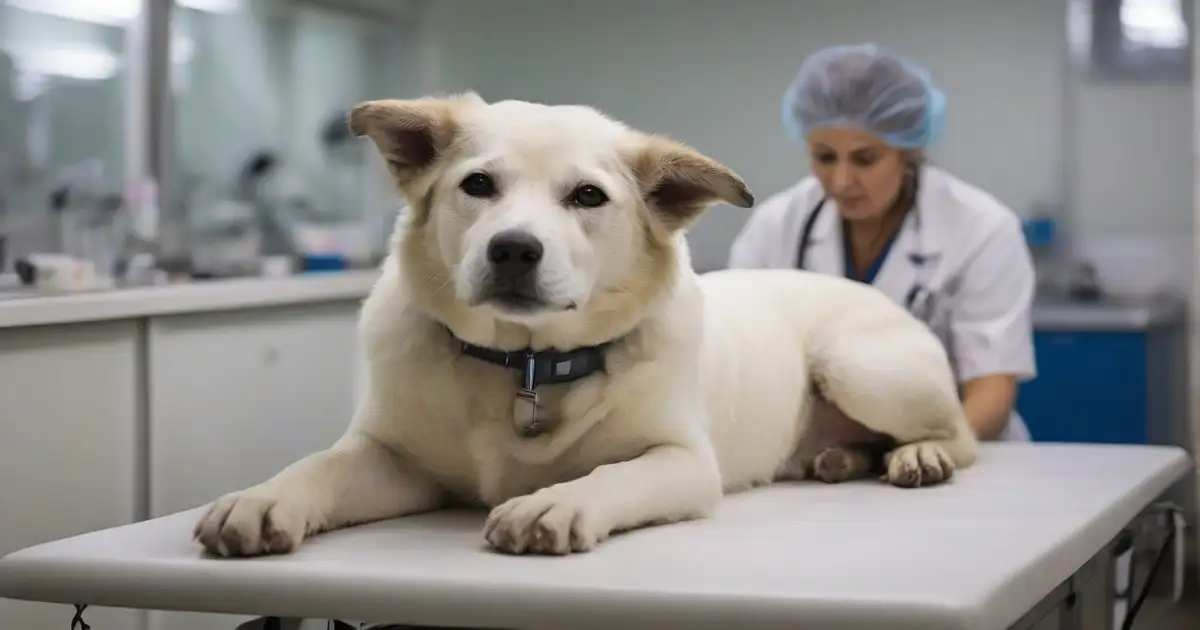So your fluffy Alabai just had a litter of adorable pups – congrats! As those little furballs grow, you may wonder: what should an Alabai weigh when fully grown?
Understanding Alabai dog weight standards helps ensure our giant cuddle bugs stay happy and healthy. From ideal nutrition to senior dog care, this paw-some guide covers everything you need to know.
We’ll dish on Russian vs. Western size metrics, signs of over/underweight, and tips for asking the vet about your baby’s perfect figure. Let’s dive in to get the 4-1-1 on-fit Alabai dimensions!
Why Fido’s Figure Matters: Size And Weight For Alabais
For massive Alabai pups like yours, having the right frame carries significant perks. Let’s dig into why dimensions matter for this ancient Central Asian breed.
Initially, Alabais performed essential duties across the farmstead. These independent thinkers guarded livestock day and night, keeping predators at bay.
When facing threats like wolves in the field, Alabai dog weight standards gave them an edge. Generally tipping the scales around 100-200+ pounds, their sturdy size could take on any beast.
With thick coats and towering height, Alabais had the strength and bulk to run fast and far while patrolling territories across remote mountain pastures. Yet they moved with agility when needed to give chase. Form and function went hand-in-hand.
Today, most Alabais lead cozy lives as family companions. But those inherited instincts – and ideal physiques – remain in their DNA. Physical power is vital if you want a robust ride-or-die protector at your side.
- That said, balance matters, too. Overly heavy Alabais may stress joints with excess weight. On the flip side, underweight pups risk lowered strength and health woes.
- Finding the sweet spot for your pup’s structure allows them to thrive. It keeps their muscles lean and ready for action, their bones supported, and their coat shiny and thick.
- As Alabais mature, aiming for proportionate weight helps them play their part well when adventures call. It also prevents obesity-related illnesses down the road.
So, while cuddly chunkers melt our hearts, fitness is central to your Alabai’s working spirit. Let’s keep that hardy health they’re known for! Proper poundage puts a pep in their step.
From Central Asia to the Kennel Club: Alabai Dog Weight Standards
With deep roots as Central Asian livestock guardians, Alabais weren’t bred to fit a perfect mold. Instead, their reputations rode on real working ability out on the farm. Even so, regional differences in ideal Alabai dog weight standards emerged over the centuries.
Ancestral Home: Alabai Sizes in Central Asia
In remote mountain terrain with extreme weather, only the most robust Alabais survived. They self-selected for traits like endurance, fierce territoriality, and supreme strength against predator attacks. With no centralized breeding standards, sizes ranged widely depending on their role.
- Shepherd dogs working with horses and cattle typically clocked in at over 200 pounds (100 kg). Their heavyweight ranks intimidated all who entered their domain.
- On average, settlement and village guardians tipped scales around 110-180 pounds (50-80 kg). These loyal ‘porch dogs’ were lighter in build but still imposing in size compared to other breeds.
- Within Central Asia, the most incredible variety in size emerged based on geography and purpose. Desert-dwelling Alabais ran leaner and lankier, while mountain types carried more fur and meat for the bitter cold. All were treasured for vigor most of all.
Their legend grew as Alabais spread to remote farms across Russia and Eastern Europe over the 19th century. But it wasn’t until Soviet-era collectivization that efforts emerged to define an ‘improved’ Central Asian Ovtcharka working breed.
Russian Breed Standards: Separating Work from Show
Under collective farming, Moscow prioritized agricultural output using working dogs. Alabais pulled heavier loads as all-purpose utility animals. State kennels optimized them for labor intensity, standardizing adult sizes.
- For Alabai dog weight standards in males, show-quality adults ranged between 121-180 lbs (55–80 kg), while working stock weighed up to 220 lbs (100 kg) or more if the draft ability was valued.
- Females registered from 88-143 lbs (40-65 kg) typically for show lines and over 176 lbs (80 kg) among working packs. They balanced power with femininity.
This Russian dual breeding track continues today, split by aesthetics versus working prowess. Among Western registries focused on purity and type, singular weight metrics prevail.
Western Kennel Club Standards: A More Uniform Look
As Alabais caught on as guardians and family friends across Europe and America, breeding moved further from functional roots. With influxes from scattered Central Asian lineages, diversity in size and type mushroomed.
- To bring uniformity of appearance, kennel authorities now catalog an ideal height and weight. But fewer metrics separate workers from companion show dogs these days.
- For Alabai dog weight standards to uphold breed character, most Western kennels call for a minimum weight of 99 lbs (45 kg) and 132 lbs (60 kg) up to a maximum of 176 lbs (80 kg).
- Dogs must convey power and stature while also moving smoothly. Lithe athleticism is favored over hulking mass alone.
While Western trends promote moderation of frame and weight, remember your Alabai’s origins. As Central Asian breeds, nature endowed them with might at maturity – so expect a Goldilocks zone to uphold health.
Keeping Your Alabai Fit: Diet, Exercise & Weight Tips
When it comes to Alabai dog weight standards, both too little and too much poundage cause issues. What fuels can keep your hybrid hefty yet healthy? Let’s explore diet, activity levels, and other weight factors.
Diet: Protein-Packed Grub for Muscle
As an ancient working breed, Alabais thrive on a meat-focused ancestral diet. High protein kibble or raw food helps maintain lean muscle mass important for strength.
- With lower carb intake, they conserve energy in their muscular frame instead of packing on pounds. Grains and fillers tend to produce poop simply!
- Talk to your vet, but around 25-30% protein suits an adult Alabai’s needs. Beef, bison, lamb, turkey, eggs, and salmon provide quality amino acid sources.
- Mix in bone broth for natural glucosamine to lubricate those big joints, too. Anti-inflammatory turmeric prevents chronic issues. Consider a joint supplement as well.
- Avoid overfeeding commercial kibble, which joins sugars and starches. An inactive dog soon balloons. Instead, follow guidelines based on current weight and activity levels.
Through research-backed nutrition science, you can give your Alabai fuel to thrive – not just survive. Keep their frame muscular and trim.
Exercise: Activity for Sustained Health
Alabais need sufficient exercise to maintain optimal fitness, too. As livestock guardians bred to patrol vast mountain lands, they love a good trek!
- Aim for at least 60-80 minutes of daily brisk walking, running, playtime, or hiking. This keeps their heart strong and weight steady.
- Mental stimulation matters also. Nose work, obedience training, puzzle toys, and job assignments also give their minds a workout. Bored Alabais tend to find trouble!
- Monitor activity in hot weather to prevent overheating or exhaustion. And senior dogs may need joint-friendly routines adjusted to their mobility.
- Ideal Alabai dog weight standards show through in defined waistline, vitality and stamina over the years. Prioritize lifelong movement to avoid obesity.
More Weight Management Insights
A few other tidbits to remember regarding your Alabai’s weight:
- Early spay/neuter can slow metabolism. So, monitor calories post-surgery to avoid rapid weight gain.
- In mature dogs, gradually decreasing activity can trigger fat accumulation and muscle loss. Adjust food as needed.
- Some medical issues like hypothyroidism predispose dogs to obesity. Have your vet run tests if weight gain seems abnormal.
- As large breeds, Alabais don’t typically live as long as tiny lapdogs. Keep their middle years vibrant through conscious fitness habits.
- In seniors, watch for sudden weight loss signaling illness. Joint supplements, massages and diet changes can ease their golden years.
With insight into keeping your Alabai robust and healthy for life, you’ve got this! Just remember, that ‘big-boned’ body needs special care.
Eyeing the Scale: Signs Your Alabai’s Weight Is Off
While each pooch carries pounds differently, clear signals suggest when your Alabai tips the scales too far up or down. Catching minor hitches early keeps things on track.
Clues Your Alabai Could Be Overweight
- Rounded belly sags and wobbles near hind legs
- Chest/waist appear indistinct; no tucked abdomen
- Trouble feeling (or seeing) ribs beneath thick coat
- Heavier panting and faster fatigue on walks
- Stiffness getting up, lagging on hikes
- Irritated skin folds with tearing, reddening
- Generally acting withdrawn and low energy
If your plus-sized pup shows these symptoms, it’s time to consult your vet on safe weight loss. Excess flab stresses bone structure, respiration, circulation, metabolism, and heat regulation.
Get ahead of complications before they progress. Diabetes, heart conditions, arthritis and more plague overweight Alabais. Through thoughtful food/fitness guidance tailored to your dog’s needs, you can shift the scales back toward healthy.
Signs of an Underweight Alabai
On the other hand, the following should prompt a vet visit to discover why your adult Alabai seems too thin:
- Ribs and spine visibly protruding without palpation
- Loss of muscle mass, leaving a frail, bony frame
- No padding to ‘fill out’ their coat or give a cushy shape
- Loose skin/fur was once covered by firm flesh
- Chronic veterinary issues causing loss of appetite/condition
- Increased frailty and lethargy during walks or play
Helping underweight Alabais regain pounds revolves around identifying and addressing the root cause, which may be medical.
Get your vet’s take. In the meantime, try tempting with aromatic foods. Monitor eating habits and energy levels closely, too. Weight reflects overall wellness, so strive to keep your Alabai fit.
Asking The Experts: Getting Your Vet’s Take On Weight
While general Alabai dog weight standards provide helpful guidelines, your pup’s perfect fitness depends on many individual factors. Age, build, lifestyle and more all play parts. For personalized advice, turn to your veterinarian.
Routine Weigh-Ins
Establish a baseline adult weight for your Alabai during their first yearly checkup. Accounting for growth plate closure, intact/altered status, bone density and genetic heritage, your vet can offer perspective on suitable targets.
- Schedule follow-up weigh-ins at least annually, if not more often. Seeing slow, steady changes over time prevents shocks down the road.
- Keep your in-between weight logs, too. At-home wellness checks reinforce staying on track.
Assessments Beyond The Scale
Rather than numbers alone, vets also consider body condition. They’ll run hands along your pup, poking and prodding their silhouette. Signs like abdominal tuck, rib feel, and neck scruff all help score overall fitness.
- Muscle tone and coat condition also come into play. Your vet determines if current feeding and activity helps your Alabai thrive.
- Senior dogs may need modified goals to account for slowing metabolism and activity as they age.
- Juvenile growth rates matter too – packing pounds too quickly before skeleton maturity risks lasting impacts.
With a trained eye and hands-on touch, your veterinarian reads between ‘standard’ sizes. They craft realistic targets to keep your Alabai feeling their best through life’s seasons.
Partnering For Health
As your Alabai’s healthcare advocate, make the most of vet visits. Come prepared with questions, tracking details, and concerns about diet, performance, or confusing changes.
- Troubleshoot obstacles together – the 1-2 punch of professional guidance and your daily diligence sets up success.
- Follow prescribe
Conclusion
Regarding your beloved guard dog, goofball, you want both health and happiness for years and years. Monitoring those Alabai dog weight standards gives your pup their best shot.
We covered the importance of fitness for the breed’s working legacy. While mellow couch cuddlers now, robust skeletal support and muscle still enable those bursts of protection when it matters most.
Through the ideal combo of nutrition, activity, and veterinary care, your Alabai thrives in both body and spirit. Stay on top of subtle changes as pups mature into seniors to catch issues early.
While pure poundage offers helpful guidelines, individual dogs carry weight differently. Unique builds, metabolisms, lifestyles and medical needs shape ideal dimensions. Know what excellent condition means for YOUR fluffy best friend.
Empower yourself as your Alabai’s health champion and weight warrior. With knowledge of breed backgrounds, signs of trouble, and weight management tactics, you have the tools to keep your pup fit for adventures ahead.
Here’s to many more happy years of joy and vitality with your treasured family guardian! Stay strong in your body and boundless in your heart.









